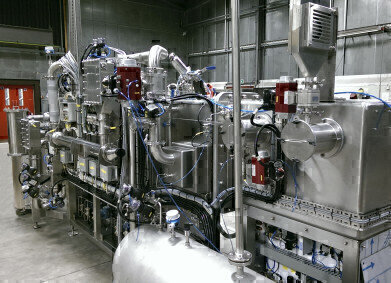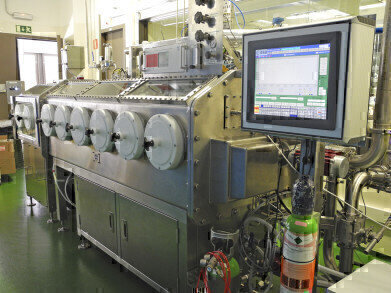News & Views
Hosokawa Micron Ltd Joins the Space Race
Nov 30 2015
Engineers at Hosokawa Micron Ltd have literally taken their latest glove-box developments into another dimension with a recent collaboration with the European Space Agency, working closely with scientists and engineers at the Universitat Autonoma de Barcelona, to develop a pilot plant habitat in the form of a high containment glove-box and gas loop system.
The Compartment V glove-box was designed, built and installed by Hosokawa Micron as the final piece of the jigsaw in the MELiSSA Pilot Plant to provide a habitat for the development and demonstration of regenerative closed loop life support systems, paving the way for deep space travel. The project also offers potential solutions for today’s global challenges such as waste recycling, water provision and food production in harsh environments.
The MELiSSA project (Micro-Ecological Life Support System Alternative) depends on biological processes and understanding how these may be affected by reduced gravity and cosmic radiation. For cost and safety reasons the MELiSSA Pilot Plant is a ground based, closed loop support system with a ‘crew’ of rats. Later developments will involve humans, in preparation for future space missions.
The glove-box system represents the crew compartment and allows regeneration of the habitat atmosphere (loaded with carbon dioxide exhaled by the animal crew) and control of an oxygen fraction set-point.
Part of the habitat atmosphere is circulated through a photo-bioreactor, where photosynthesis converts carbon dioxide into oxygen.
The experiments carried out rely on having a ‘gas tight’ environment and the entire system was designed to achieve a leak tightness of less than 0.03% volume per hour (equivalent to a pressure loss of 0.3mbar/hour).
The gas loop and glove-box are fitted with instrumentation for monitoring and control of environmental parameters such as pressure, flow, temperature, humidity etc.
With no external ventilation, the internal pressure would suffer large variations due to changes in atmospheric pressure and temperature without the innovative design of a pressurised buffer tank which can remove or add gas to the system to compensate for these variations and hence maintain a constant internal system pressure.
Another key aspect of the design was to comply with strict requirements for the comfort and welfare of the animals. This includes strict control of the internal temperature, humidity and lighting (each cage has its own dedicated fan and dimmable, soft lighting) as well as removing potentially harmful contaminants from the recirculating gas flow.
Digital Edition
Lab Asia 31.2 April 2024
April 2024
In This Edition Chromatography Articles - Approaches to troubleshooting an SPE method for the analysis of oligonucleotides (pt i) - High-precision liquid flow processes demand full fluidic c...
View all digital editions
Events
Apr 25 2024 Istanbul, Turkey
Apr 28 2024 Montreal, Quebec, Canada
May 05 2024 Seville, Spain
InformEx Zone at CPhl North America
May 07 2024 Pennsylvania, PA, USA
May 14 2024 Oklahoma City, OK, USA



















